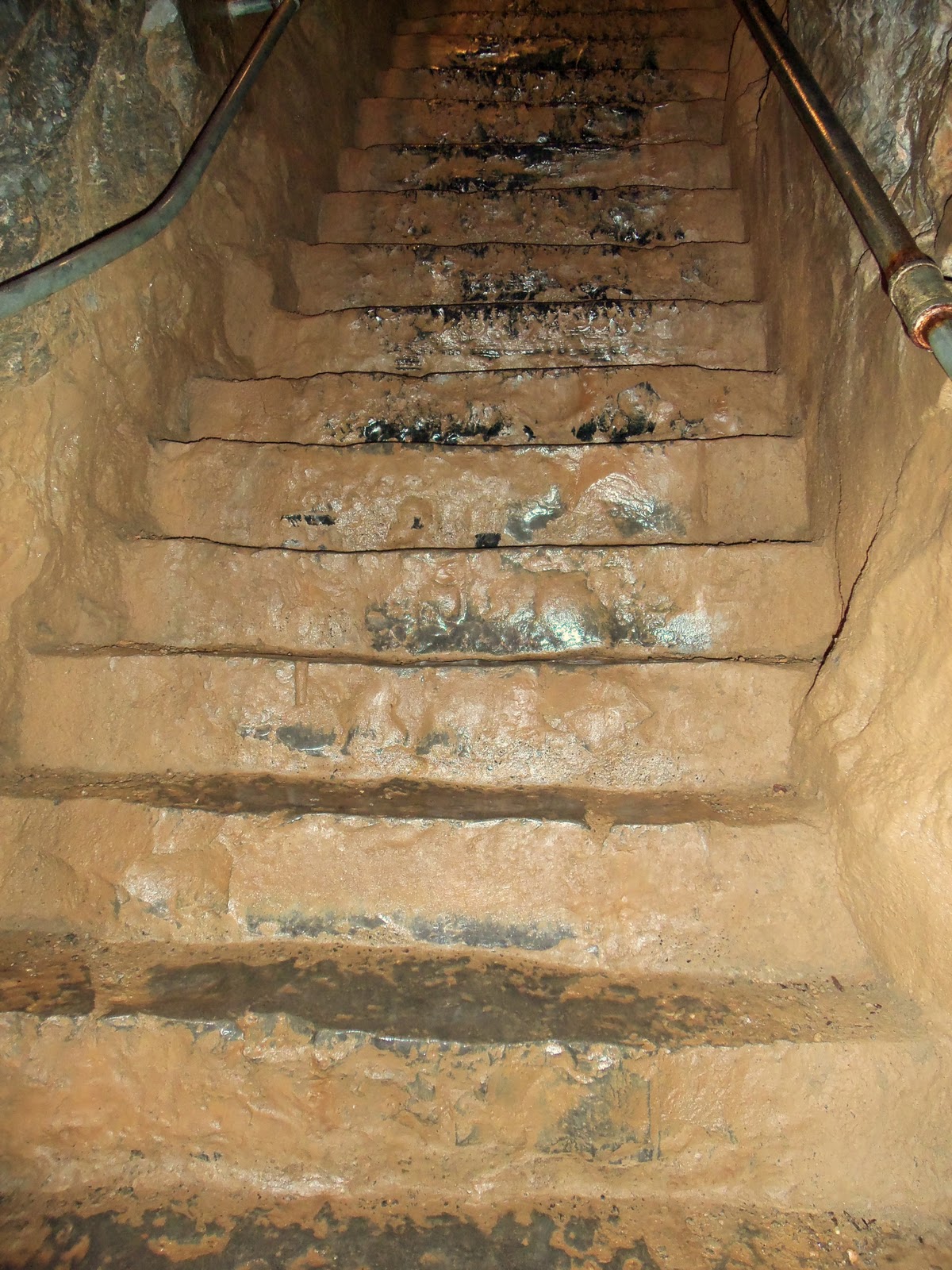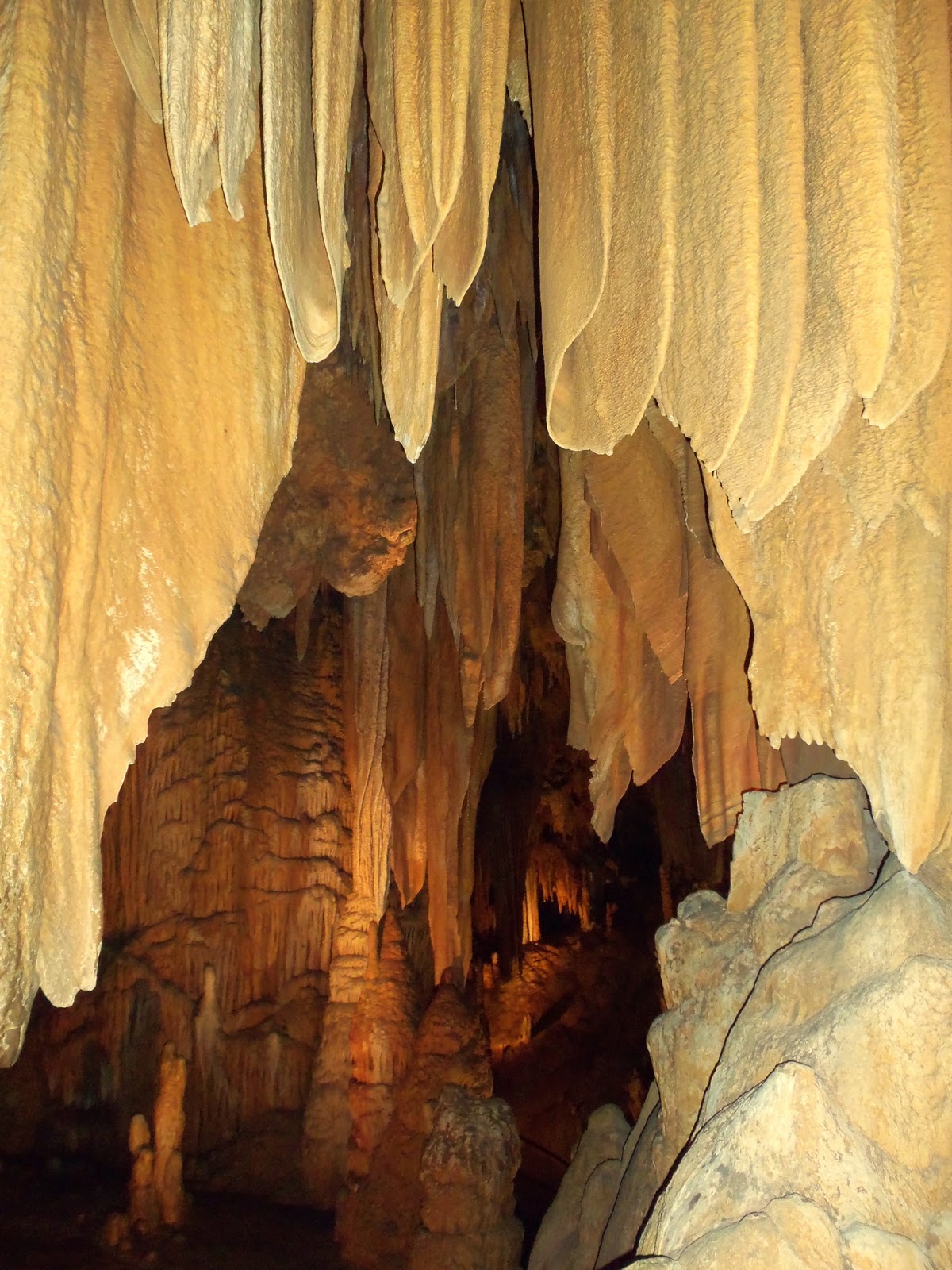On Monday, after three nights at a wonderfully remote lodge in the Shenandoah Valley of Virginia, John and I realized we weren’t ready to go home and so headed two hours northeast – away from our house in Charlotte – to check out some of the caverns in the area.
We enjoyed the first set, Endless Caverns; my only regret leaving was that the third (lowest) level of the cave was not open to the public. I’m that cat whose curiosity will get it killed one day, and hearing the tour guide talk about the closed-off portion of the cave was rough.
The second set, Luray Caverns, required a 20-minute drive up the highway. A mile before we reached the parking lot entrance, we’d tagged Luray as endlessly more commercialized than Endless. Seedy tourist traps dotted the road, and the caverns themselves accounted for just one of the attractions accessed from the parking lot. We briefly considered nixing Luray for the Skyline Drive in nearby Shenandoah National Park, but in the end, we sucked it up, paid our $46 and joined one of the tour groups in line to receive audio tour headsets like the ones they hand out at Alcatraz.
As soon as we took our first few steps into the underground wonderland, I took in the brick walkways, handrails, audio tour signs, and yards upon yards of wires leading to harsh flood lamps in the eons-old rock. As I silently cursed the ultra-modernization of the caverns themselves and imagined myself instead exploring a wild, undeveloped cave, I noticed that a young woman in a wheelchair and her parents had joined our group. Before I had time to wonder how she would be able to navigate the steep stairs we had just descended, two teenage guides came up behind her and pushed a hidden button that activated a sophisticated lift system. The guides negotiated with the wheelchair until its owner was first safely on the lift and then, just moments later, on the smooth, gently sloped brick walkway that snaked deeper into the cave. For the duration of the 75-minute tour, the woman and her parents brought up the rear but never kept the rest of us waiting. By the time we climbed back up those stairs toward daylight, I was glad John and I had chosen to stay and thankful, too, that the woman in the wheelchair had been given the chance to see the caverns, just like us.
Back when Taylor first became visually impaired, I quickly developed a keen awareness of physically handicapped people around me as well as the opportunities and assistance (or lack thereof) afforded to them in public places. I never really thought about the mechanics of finding the right button in the elevator or distinguishing the ladies’ room from the men’s until my sister could no longer read the signs. Now, I’m hypersensitive of those mechanics as well as the feelings of people like T, and I marvel at the lack of sensitivity some others show toward them. Blindness is T’s most significant handicap today, but I know in my heart that unless we find a cure quickly, she will eventually join many others with Batten disease in spending most of her days in a wheelchair. And while I initially wrung my hands over the considerable liberties the private owners took with their personal gold mine at Luray Caverns, I know that if my sister could see that underground fairyland, I wouldn’t want a steep staircase to stand in her way.


